5 frugal lessons from the Depression
The Bankrate promise
At Bankrate we strive to help you make smarter financial decisions. While we adhere to strict , this post may contain references to products from our partners. Here's an explanation for .
Frugal lessons from Depression-era ads
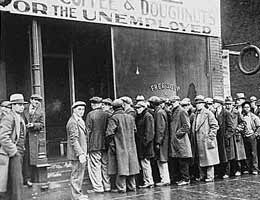
What can advertising from the Great Depression teach us? Plenty about saving money, as it turns out. The 1920s ushered in a wave of advertising campaigns chasing the plentiful dollars of consumers. Ads created needs and desires for merchandise readily available for mass consumption. Furniture, watches, kitchen appliances and cars rolled off the production line and into consumers’ homes.
“You didn’t need these products for thousands of years,” says Robert S. McElvaine, chairman of the Department of History at Millsaps College in Jackson, Miss., and author of “The Great Depression: America, 1929-1941.” With advertising, “you create a need.”
Shoppers in the Roaring ’20s responded to those ad campaigns by dropping a bundle of money, much like consumers of the 1990s and early 2000s.
But after the bust, advertisers realized their approach had to change as people tried to save money. Here are some of the ads of the Great Depression from magazines aimed at a pinched middle class, and the lessons we can learn for our own frugal times.
Spend more on quality products
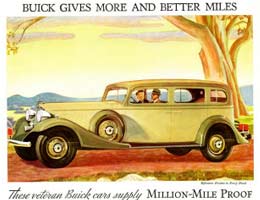
Then: Advertisers of the day knew consumers were price-sensitive, and ads often revealed prices. But advertising campaigns also reminded buyers to avoid falling for the cheap and disposable. Ads for higher-priced goods pointed out that this iron, vacuum or cloth would last for years instead of months.
“Price was a major consideration,” McElvaine says. “You didn’t buy something and throw it away. You looked for lasting value.”
Now: As a society, we’ve become accustomed to items that we use and throw out. Repairing is as rare as owning a vacuum built to last. But by buying a well-made item, consumers can save money by not replacing it quickly.
Don’t place frugality over nutrition; health is priceless
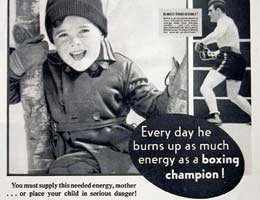
Then: In the 1930s, malnutrition was a real concern, as workers lost jobs and the Dust Bowl devastated farms. While the middle class wasn’t at risk, it was susceptible to ad campaigns for then-new processed foods (such as canned vegetables and instant cereal) that used scary words like “lethargic and pale” next to images of children. Advertisers knew just how to panic the middle-class mother. “Fear is a good way to sell things,” says McElvaine.
“Packaged and processed foods took care of concerns about whether food was fresh,” says Peggy Kreshel, associate professor of advertising in the Grady College of Journalism and Mass Communication at The University of Georgia. Canned vegetables and fruit offered nutrition in a tin.
Now: Boost fruit and vegetable consumption — whether fresh, frozen or canned — to lose weight and save money in the long run. However, highly processed foods shouldn’t be such an easy sell. Cheap, high-calorie foods can contribute to obesity and increased health care costs due to weight-related issues such as diabetes and heart conditions.
Save money on energy-efficient appliances
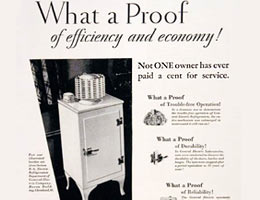
Then: Ads from the era appeal to customers’ sense of frugality. Newfangled electric ranges, refrigerators and oil furnaces became popular and were seen as a modern-day advance over wood- or coal-burning equipment. Devices also were depicted as labor-saving and time-saving, says Kreshel.
Fireproof, weather-resistant asbestos siding and roofing materials promised to cut costs and repel cold winds. Such ads dovetailed with the 1930s-era Rural Electrification Administration’s program, which put almost everyone in the U.S. on the power grid.
“A lot of the New Deal programs helped Americans and expanded the market for private business to sell things to more people,” McElvaine says. For instance, many new electricity customers had a need for electric appliances.
Now: Appliances rated with the EnergyStar seal — a government standard for energy efficient appliances — and modern-day insulation without asbestos can save money by siphoning less from the power grid.
Consumer products can have multiple uses
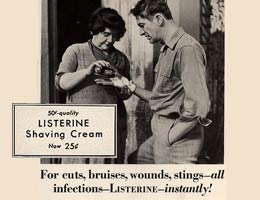
Then: In the 1930s, advertisers asked shoppers to consider multiple uses for one product. A tissue advertisement from the day offers more than a dozen ways to use a disposable hankie, and tries to convince shoppers that disposable is better than dirty cloth. Listerine advertised that it could be used for ridding oneself of dandruff, soothing a baby’s gums and avoiding body odor.
“In the ’30s and to some extent today, it’s a harder-sell environment for advertisers,” McElvaine says. “So they had to come up with more uses for the product and to figure out ways to overcome reluctance.”
Now: In a buy-and-toss society full of single-use products, we rarely think about multiple uses for one item. But opportunities still exist. Baking soda can deodorize a closet or clean baby equipment. Vinegar erases spaghetti stains on clothing and cleans up scrapes on skin. A product with multiple uses can save money throughout the house.
Improve one part of your house at a time
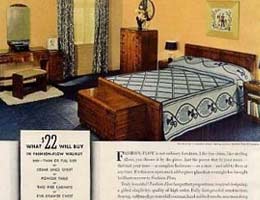
Then: The ’30s reintroduced deferred gratification. Ads offered one-element makeovers such as the installation of a linoleum floor or the addition of a fabulous piece of furniture. Magazine articles showed how to save money by moving around a room’s existing elements or adding a new bed skirt or curtain to modestly improve a bedroom’s or bathroom’s appeal. McElvaine says part of the frugal mindset of the ’30s was the precept that people shouldn’t be wasting money in hard times. It became socially unacceptable to flaunt relative wealth; expensive new furniture would be noticed by the neighbors.
Now: With home prices continuing to fall, it’s difficult if not impossible to refinance to pay for a grand remodel (as seen on TV). Today’s homeowners need to adjust to a new reality of small housing improvements over longer periods of time.
A bathroom remodel could take months if a homeowner replaces just one element per month. By slowly transforming a room, you’ll improve it without raiding savings or going into debt.
Additional resources
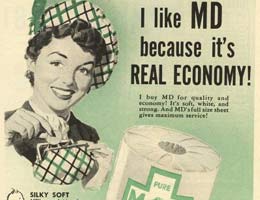
- Frugal home maintenance
- 5 frugal dating tips
- When it pays not to scrimp
- How to dodge debt denial
- Frugal car ownership
- Saving in the recession
- Save money in 5 minutes
Related Articles



